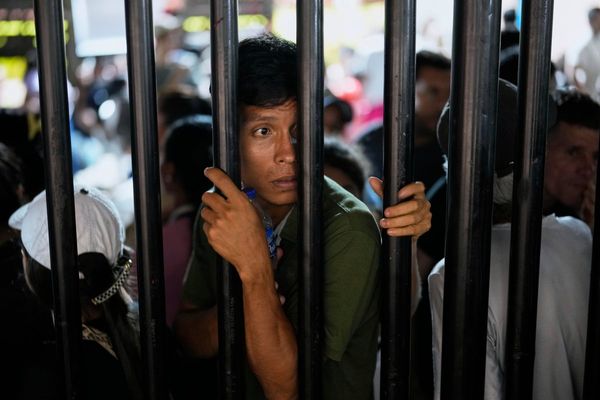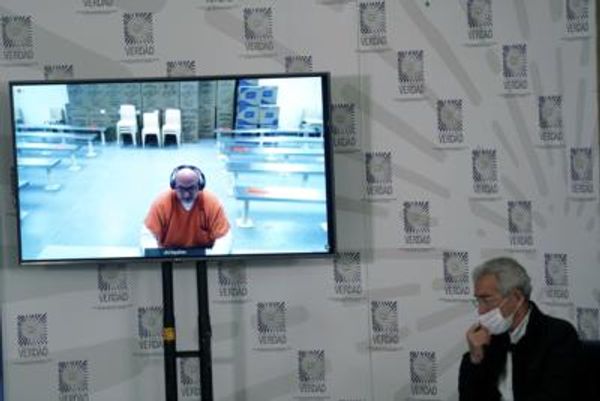
Ukraine’s simultaneous sea and sky drone strike on Russia’s Black Sea flagship at the weekend was hailed as novel in naval warfare and a tactical turning point in Vladimir Putin’s war on Ukraine.
“We’ve never seen it [before],” Travis Reddy, CEO of Australian defence technology company DefendTex, told Crikey. “The ability to quickly evolve and iterate and affect the enemy is something that we’ve never seen in modern battle.”
According to open-source intelligence analysis of video footage (the source is yet to be confirmed), the dual aqua and aerial attack on the Crimean port of Sevastopol damaged and potentially disabled Russia’s lead frigate, the Admiral Makarov.
In a statement, Russia’s Defence Ministry called it a “terrorist attack” carried out with the aid and “supervision of British specialists”. It said Ukraine unleashed “nine unmanned aerial vehicles and seven autonomous maritime drones” on the “outer and inner roads” of the Sevastopol base, implicating both its Black Sea fleet and civilian ships.
Politics aside, just how does a drone worth a couple of thousand dollars debilitate a military asset worth hundreds of millions? Crikey turned its attention to the technology to talk tactics.
“The whole premise behind the use of drones is to use the many and the cheap to overwhelm the few and the expensive,” said Reddy, whose company provides weapon systems into Ukraine on behalf of governments around the world, including Australia.
He has also spent time in the field in Ukraine’s Donbas region and said drones are an inroad into asymmetric warfare. In short, attack your enemy where it’s weak and appear strong where you’re weak: “It’s all about trying to position yourself to take advantage of inherent flaws.”
One of the inherent flaws in traditional vessels of war — in this case Russia’s fleet — is that defence systems are designed to defend against fast-moving missiles, aircraft and the “easily detectable”. The beauty of drones is that they’re small and comparatively slow, so often get filtered as “clutter”.
“If they detect every bird that’s flying in the sky, every whitecap that’s on the ocean, the radar operator will be so consumed looking at a million things that aren’t of interest that they’ll miss those one or two things that are important,” Reddy said.
“You end up adopting this notion of hiding in plain sight, hiding amongst the noise, move slow, move steady, appear to be like all the other clutter that’s out there and then you’ll get filtered out and the operator will never see you because their systems are automatically removing that clutter.”
Psychologically, this breeds insecurity. Heightened vigilance means more hands on deck, more man hours, and operationally less efficiency.
Apply this to the Black Sea attack and suddenly the strategic scales start to tip. Small things are attacking from both air and ocean “overwhelming the decision-making cycle for people that are on the ship”.
It’s believed that many of these drones were neutralised by Russian defence systems, but not all.
“If one in 10 gets through that’s still a success,” said Reddy.
So what about the drones that made it through? Based on open-source intelligence analysis, the seaborne fighters are believed to be unmanned surface vessels (USVs) — similar to the canoe-like contraptions that washed up near Crimea in September.
These come equipped with a jet ski engine on the back, a Starlink satellite terminal for remote control, a thermal imaging camera, and contacts at the front to activate a detonator.
Reddy’s read is that someone’s remotely piloting it, “looking for the targets of opportunity”, locating a target, homing in, getting close enough, then detonating.
From the sky, it was probably a “suicide” drone that flies a “one-way mission”. These are the size of a Coke can and operate much like a flying hand grenade, meaning the explosives are embedded into the device. When it detonates, the drone goes down with it.
The drone game is very different on land, but its introduction to modern warfare is what Reddy deems “the great leveller of the battlefield”.
“One of the reasons that the Russians didn’t manage to succeed in the early days, is their logistics chain couldn’t keep up with the ammunition that’s needed, the fuel that’s needed, the food that’s needed to support all those tanks that are operating,” he said. “Drones don’t need any of that. They need a power socket somewhere you can plug in and recharge it.”







